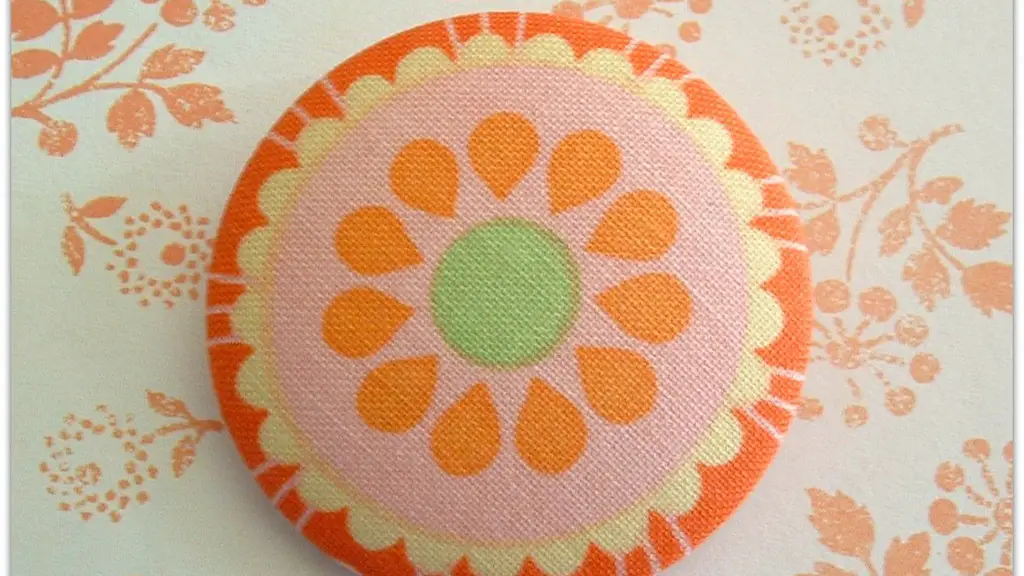Sewing machines are incredibly useful tools for creatives and DIYers alike. However, thread can sometimes become bunched up in the machine, causing your sewing to become sloppy or even disastrous. This can be hugely frustrating and while it might seem intimidating, it is possible to fix your sewing machine thread bunching up with a few simple steps.
The first step is to identify the source of the problem. Thread bunches most often occur around the tension discs, so start by examining this area. It could be that the discs are not properly tensioned, the thread has become tangled or ripped, or debris is stuck in the mechanism.
If the tension disks appear to be the source, first ensure that the discs are secure and that the setting is correct. If the tension setting seems to be correct, then the discs may need to be adjusted manually. To do this, loosen the two screws just enough to be able to shift the discs further apart or closer together by a fraction of a turn. If the threads do not react, the discs need to be adjusted in the opposite direction. Experiment until the right tension is found.
If the issue appears to be tangled or ripped threads, first use a lint brush to get rid of any loose threads or accumulated lint. Then, locate the area where the thread has become damaged. If it is simply tangled, gently untangle the thread without pulling too hard. Replacing the thread may also help, as sometimes the old thread becomes weak and prone to bunching.
Another potential source of issues could be debris caught in the machine. To clean out your sewing machine, start by disconnecting all power sources, and then take the machine apart. Use a small brush or compressed air to get rid of any particles or dirt build up. Depending on your model, this might include the feed dogs or the bobbin area. After cleaning, put everything back together and reattach the power sources.
After doing all these steps, always perform a test stitch to ensure that the problem is solved. As each model is slightly different, it can take some experimentation to find the ideal setting. If these adjustments do not seem to do the trick, try consulting the instruction manual or consider taking it to a professional.
Additional Tips
Most importantly, be wary of the type of thread that you use in your sewing machine. High-quality threads will glide smoother and cause less bunching. Furthermore, if you’re working with lightweight fabrics, your sewing machine may not be suitable for the job and could lead to thread inaccuracy. Try using a heavier-duty machine for these materials instead.
Keeping a few spare needles on hand is also a good idea. Needles wear down over time and can become dull, causing thread bunching. Frequently check and replace worn out needles with a sharp new one.
Thread Attention
Thread is an often overlooked, yet essential, component of successful sewing. Keeping an eye on the condition of both the needle and the thread can help stave off unexpected thread bunching. Buying quality thread will help you avoid the majority of thread bunching issues, as the thread is more likely to be strong and glide smoothly through the fabric. Generally, avoid top-stitching with regular sewing thread, as this often leads to bunching issues. Put up extra thread holders to reduce tangles, or opt for a specialty thread for smooth and effortless stitching.
Time to Clean
To help prevent thread bunching, regularly cleaning the hook and upper tension area will help remove dirt and particles build up. A quick brush with a sewing machine lint brush can help keep the hook area free from undesirable build up. Additionally, make sure that the machine is well-oiled, as this will ensure that the parts move freely and that no thread bunching occurs.
Consult the Manual
If thread bunching continues to be a problem, consult the manual that came with your machine. It might have specific instructions on proper threading or useful diagrams. If the manual is inadequate, try searching online for tips and tricks that may apply to your model. Additionally, taking the machine to a sewing pro can be a useful solution, as they will have the experience to diagnose and solve more complicated crowding issues.
Develop Proper Habits
Lastly, forming proper habits when it comes to sewing will help reduce thread bunching. Get used to threading the machine every time you sit down to sew. Furthermore, double check that the needle is inserted correctly and in the right position before starting to stitch. Finally, make sure that your machine is well maintained and regularly serviced by a professional.


